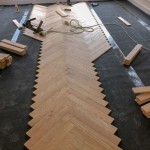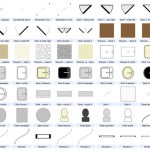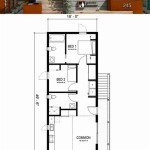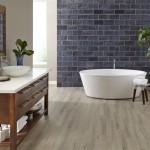Tile Flooring: Navigating the Advantages and Disadvantages
Tile flooring remains a consistent choice for homeowners and businesses alike, recognized for its durability, aesthetic versatility, and relative ease of maintenance. However, like any flooring option, tile also presents certain drawbacks that must be considered before making a final decision. This article provides a comprehensive exploration of the pros and cons of tile flooring, enabling informed choices based on specific needs and priorities.
Tile encompasses a wide range of materials, each with unique characteristics. Ceramic, porcelain, stone (such as granite, marble, and slate), and even glass are all commonly used in tile manufacturing. The selection of material significantly impacts the overall performance, cost, and aesthetic appeal of the finished floor. Therefore, understanding the subtle nuances of each type is crucial for optimizing its suitability for a particular application.
The Advantages of Tile Flooring
Tile's enduring popularity stems from a confluence of desirable attributes that make it a practical and visually appealing choice for various settings. These advantages range from exceptional durability and water resistance to design flexibility and ease of maintenance.
Durability and Longevity: Tile is renowned for its robustness and ability to withstand heavy foot traffic and wear and tear. Properly installed tile can last for decades, often outperforming other flooring options like carpet or vinyl. The inherent strength of materials like porcelain and stone contributes to their resistance to scratches, dents, and chipping. This longevity makes tile a cost-effective investment in the long run, despite the initial installation expense.
A key factor influencing tile durability is its PEI (Porcelain Enamel Institute) rating, which measures resistance to abrasion. Tiles with higher PEI ratings are better suited for high-traffic areas, while those with lower ratings are more appropriate for light-use spaces like bathrooms. Ensuring the correct PEI rating for the intended application is crucial for maximizing the lifespan of the tile floor.
Water Resistance and Suitability for Wet Environments: Tile is inherently water-resistant, making it an ideal choice for kitchens, bathrooms, laundry rooms, and other areas prone to moisture. Porcelain tiles, in particular, are virtually impervious to water, thanks to their high density and low porosity. This resistance prevents water damage, mold growth, and mildew, contributing to a healthier indoor environment.
The grout lines between tiles are the most vulnerable areas to water penetration. Proper sealing of the grout is essential to maintain the floor's water resistance. Regular resealing is recommended to ensure continued protection against moisture and prevent staining. Selecting epoxy grout, which is naturally water-resistant and stain-resistant, can further enhance the floor's performance in wet environments.
Design Versatility and Aesthetic Appeal: Tile offers unparalleled design flexibility, available in an extensive array of colors, shapes, sizes, patterns, and textures. This allows for achieving a wide range of aesthetic styles, from classic and traditional to modern and contemporary. Tile can even mimic the appearance of other materials, such as wood or natural stone, providing the desired look without the associated maintenance challenges.
Beyond the visual appeal, tile can also enhance the perceived value of a property. High-quality tile installations are often considered a premium feature, adding to the overall aesthetic and marketability of the home. The ability to customize tile layouts and incorporate decorative elements further contributes to the potential for creating a unique and sophisticated space.
The Disadvantages of Tile Flooring
Despite its many advantages, tile flooring also presents certain drawbacks that require careful consideration. These disadvantages typically relate to cost, installation complexity, comfort, and potential maintenance challenges.
Installation Cost and Complexity: Tile installation can be relatively expensive, particularly when compared to other flooring options like vinyl or laminate. The cost includes the price of the tile itself, as well as the labor involved in preparing the subfloor, laying the tile, and grouting. Intricate patterns or designs can further increase the installation cost due to the added complexity and time required.
Proper subfloor preparation is critical for a successful tile installation. The subfloor must be level, stable, and free of any imperfections that could cause the tile to crack or shift over time. This often requires additional work, such as installing a cement backer board, which adds to the overall cost and complexity of the project. While DIY tile installation is possible, it is generally recommended to hire a professional installer to ensure a high-quality and long-lasting result.
Hardness and Lack of Warmth: Tile is a hard and unforgiving surface, which can be uncomfortable to stand on for extended periods. This can be particularly problematic in areas where people spend a lot of time on their feet, such as kitchens or workshops. The hardness of tile can also make it more likely to cause injury in the event of a fall.
Tile also tends to be cold, especially in colder climates. This can make it less appealing in bedrooms or living rooms, where warmth and comfort are often prioritized. While area rugs can help to mitigate the coldness of tile, they may not be a practical solution in all areas. Radiant heating systems can be installed underneath tile floors to provide warmth, but this adds to the overall cost and complexity of the installation.
Grout Maintenance and Potential for Staining: While tile itself is relatively easy to clean, the grout lines between tiles can be more challenging to maintain. Grout is porous and can easily absorb dirt, stains, and spills. This can lead to discoloration and an unsightly appearance over time. Regular cleaning and sealing of the grout are necessary to maintain its cleanliness and prevent staining.
Darker grout colors tend to be more forgiving of stains than lighter colors. Epoxy grout is a more resistant option to staining and easier to clean than traditional cementitious grout. However, epoxy grout is also more expensive and can be more difficult to install. Regular cleaning with a mild detergent and water is typically sufficient to maintain the cleanliness of grout lines. Stubborn stains may require the use of a specialized grout cleaner.
Other Considerations for Tile Flooring
Beyond the core advantages and disadvantages, several other factors should be considered when evaluating tile flooring for a specific application. These include noise levels, slip resistance, and environmental impact.
Noise Levels: Tile floors can be relatively noisy, particularly in rooms with high ceilings or hard surfaces. Foot traffic and dropped objects can create echoes and reverberations that can be disruptive. This is especially relevant in multi-story buildings, where noise can transmit through the floor to lower levels.
Area rugs and other soft furnishings can help to absorb sound and reduce noise levels in rooms with tile floors. Acoustic underlayment can also be installed beneath the tile to further dampen sound transmission. Choosing tiles with textured surfaces can also help to reduce noise by disrupting sound waves.
Slip Resistance: Tile can be slippery, especially when wet. This poses a safety hazard, particularly for children, the elderly, and individuals with mobility issues. The slip resistance of tile is measured by its coefficient of friction (COF). Tiles with higher COF values are more slip-resistant.
For areas prone to moisture, such as bathrooms and entryways, it is crucial to select tiles with a high COF rating. Textured tiles, such as those with a matte finish or embossed surface, provide better traction than smooth, glossy tiles. Anti-slip treatments can also be applied to tile floors to enhance their slip resistance.
Environmental Impact: The environmental impact of tile flooring can vary depending on the type of tile, the manufacturing process, and the transportation distance. Some tiles, such as those made from recycled materials or those manufactured locally, have a lower environmental footprint than others. The use of sustainable manufacturing practices, such as water conservation and waste reduction, can also minimize the environmental impact of tile production.
Tile is a durable and long-lasting material, which can reduce the need for frequent replacements and minimize waste. Proper maintenance and care can further extend the lifespan of tile floors, contributing to their overall sustainability. Choosing tiles that are certified by reputable environmental organizations can help to ensure that they meet certain standards for sustainability and environmental performance.
Ultimately, the decision of whether or not to install tile flooring is a personal one that depends on individual needs, preferences, and priorities. By carefully weighing the advantages and disadvantages of tile, along with the considerations outlined above, individuals can make informed choices that result in a flooring solution that meets their specific requirements and enhances the functionality and aesthetic appeal of their space.

Pros And Cons Of Tile Flooring Kuhn Gallery

Wood Look Tile Flooring Pros Cons

6 Pros Cons Of Glazed Porcelain Tiles Is It The Right Choice For Your Home

9 Rubber Flooring Pros And Cons What You Should Know

6 Pros Cons Of Glazed Porcelain Tiles Is It The Right Choice For Your Home

Ceramic Tiles Vs Laminate Flooring Pros And Cons Face Impex

Must Know Facts About Wood Look Tiles Pros And Cons Country Floors

Pros Cons Of Flooring Types Tile Concrete Vinyl Carpet Hardwood

Pros And Cons Of Classic Quartz Floor Tiles Classicquartzstone

Pros And Cons Of Vitrified Tiles Design Flooring Sentosa Granito Pvt Ltd







